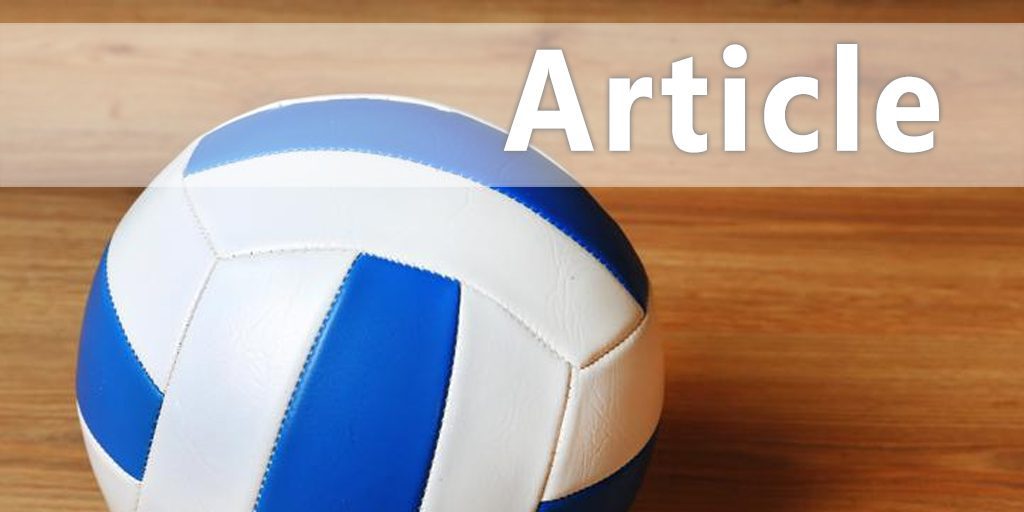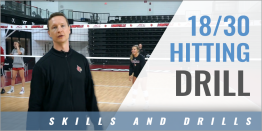|
By: Paul Arrington, MD Originally published in: Coaching Volleyball Magazine A volleyball coach calls a time-out during a match for a variety of reasons. One of the most routine times to call a time-out is to stop the other team’s “momentum,” such as when the opposing team is scoring a run of points. The thinking is that by forcing a break in the action, the coach can change the “momentum” in his team’s favor. Although most coaches think that calling time-out is successful in stopping the other team’s “momentum,” has the validity of this concept ever been evaluated critically? Good question. To evaluate the impact of a time-out on stopping “momentum” (i.e., a run of points), the average side-out percentage for all serves needs to be evaluated and compared to the side-out percentage on the first serve after a team calls a time-out. If calling time-out is effective in stopping a run, then one would expect the chances of a team getting a side-out after a time-out would be higher than their chances of getting a side out on any given serve. For example, if a team gets a side out on 60% of serve receptions during a game; one would expect to see a side-out percentage significantly higher than 60% on the first serve after the time-out. That is, if the time-out is actually effective in stopping a run. On the other hand, if calling time-out is not effective in stopping “momentum,” one would expect an equal, or perhaps even smaller than average, percentage of side-outs on the first serve after the time-out. To study this concept, matches from several different levels of the game were examined to determine the average side-out percentage on all serves, and the side out percentage on the first serve after time-out has been called. These included:
From the NCAA Division I Women’s Championship matches, it was determined that the average side out percentage was 64 percent. During these matches, after a time-out was called, the team that called time-out (receiving team) got a side out on 63.7 percent of the first post-time-out serve. If TV time-outs are included, the receiving team got a side out on 63 percent of the first post-time-out serves, not a significant difference. For the NCAA Division I men’s matches, it was determined that the men side out at an average of 67 percent of the time, while after a time-out the side-out percentage by the receiving team was 68 percent. Again, not a significant difference. The above data was surprising. It was felt that perhaps these high level experienced athletes had such a wealth of mental and emotional skills that time-outs had no impact. Perhaps examination of juniors volleyball might show the expected impact of calling time-out. In the 18-and-under division at the Volleyball Festival, the receiving team got a side out on 54 percent of the serves. On the first serve after a time-out, the receiving team got a side out on 53 percent of the serves. In the 13-and-under division at the Volleyball Festival, the receiving team got a side-out 46 percent of the time. However, on the first serve after a time-out, the receiving team sided out on 54 percent of the serves. As was stated earlier, if time-outs are effective in stopping an opponent’s run, the percentage of side-outs after a time-out should be higher than the side-out percentage for any given serve during the match. This was found to be the case for only the 13-and-under division. For the 18-and-under division, and the NCAA women and men, the percentage of side out after a time-out was almost identical to the side-out percentage on any serve. With the exception of the results for the 13-and-under division, these findings certainly do not fit the commonly accepted wisdom of calling time-outs to stop the opponent’s run and thus win a point. It is most likely that these very young athletes have not yet developed the mental skills necessary to maintain the level of concentration necessary to complete a successful serve after a time-out. It is felt that the older athletes have developed the mental skills to be able to complete their serves successfully after time-outs. Note: Although it was not studied, it would be interesting to know how frequently a service error was the cause of a side-out in the 13-and under-division. It remains to be determined at what age or level of development – between 13 and 18 years of age – that athletes develop their ability to maintain their concentration. However, based on these results, it is apparent that for 18-and-under girls and more experienced athletes, calling a time-out to stop a run and win a point is not an effective strategy at all. Since calling a time-out is not effective in stopping the other team’s “momentum,” then perhaps the time-out should be used only when the coach notices that there is a problem with fatigue, court alignment, strategy or other areas that are in need of a change. However, before adopting such a policy, the coach should inform the team that time-out’s will be not be used to stop “momentum” and that they need to stay focused and play through an adverse run of points by the opponent. Experienced players have become so accustomed to having a time-out called when the opponent scores a run late in the game, they may wonder “ when is he going to call time-out?” and lose their concentration on the game. It might take a while for a team to adapt to a new approach. It is also possible that the ideal time to call time-out is late in the game when your team is serving and needs a point. During the time-out, the coach should make clear what service strategy, blocking strategy and defensive alignment are necessary to score a point. This approach would need to be evaluated before it could be strongly recommended. However, based on the above findings, it would be at least as successful as calling a time-out to stop an opponent’s “momentum.”
|






